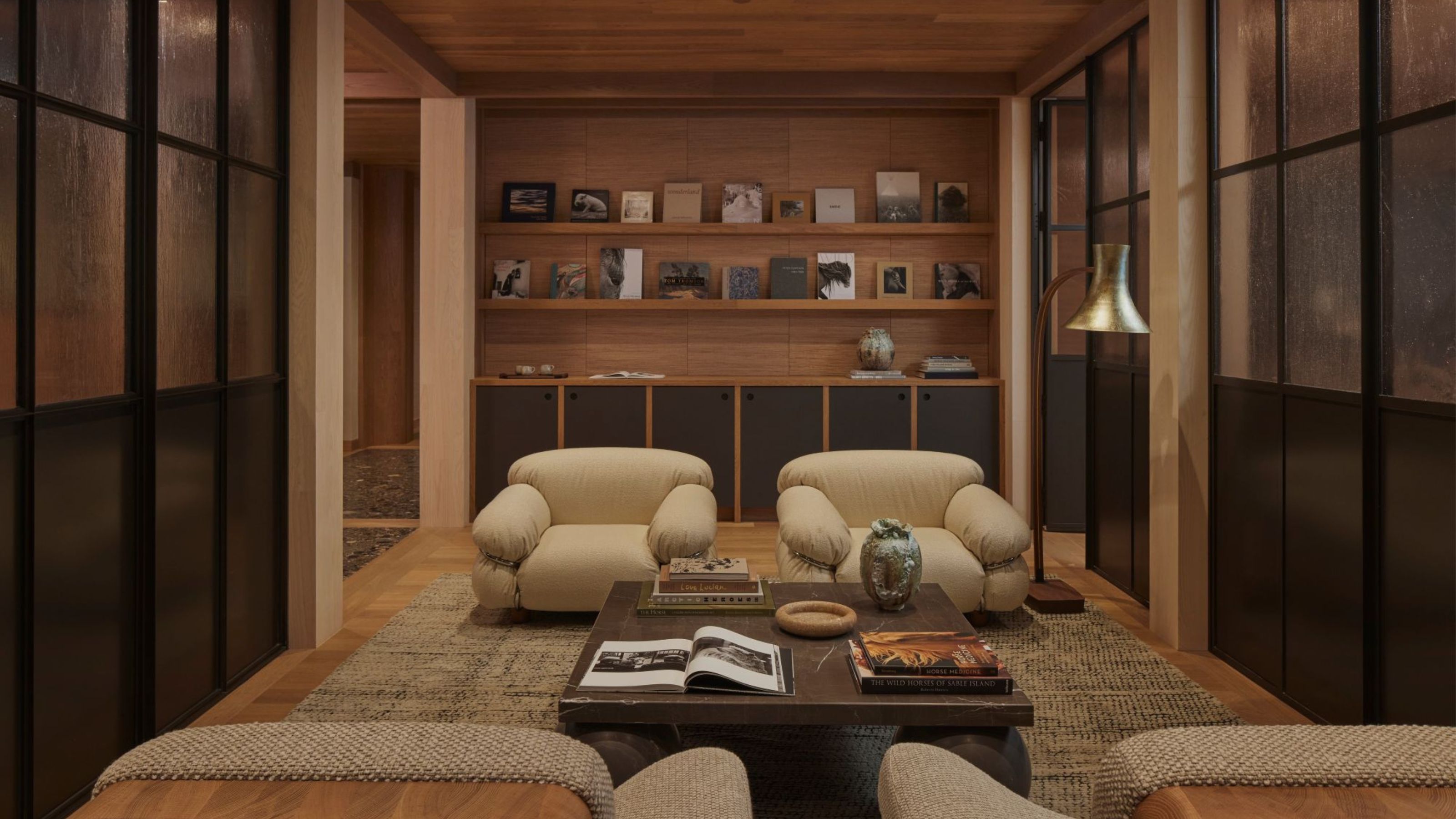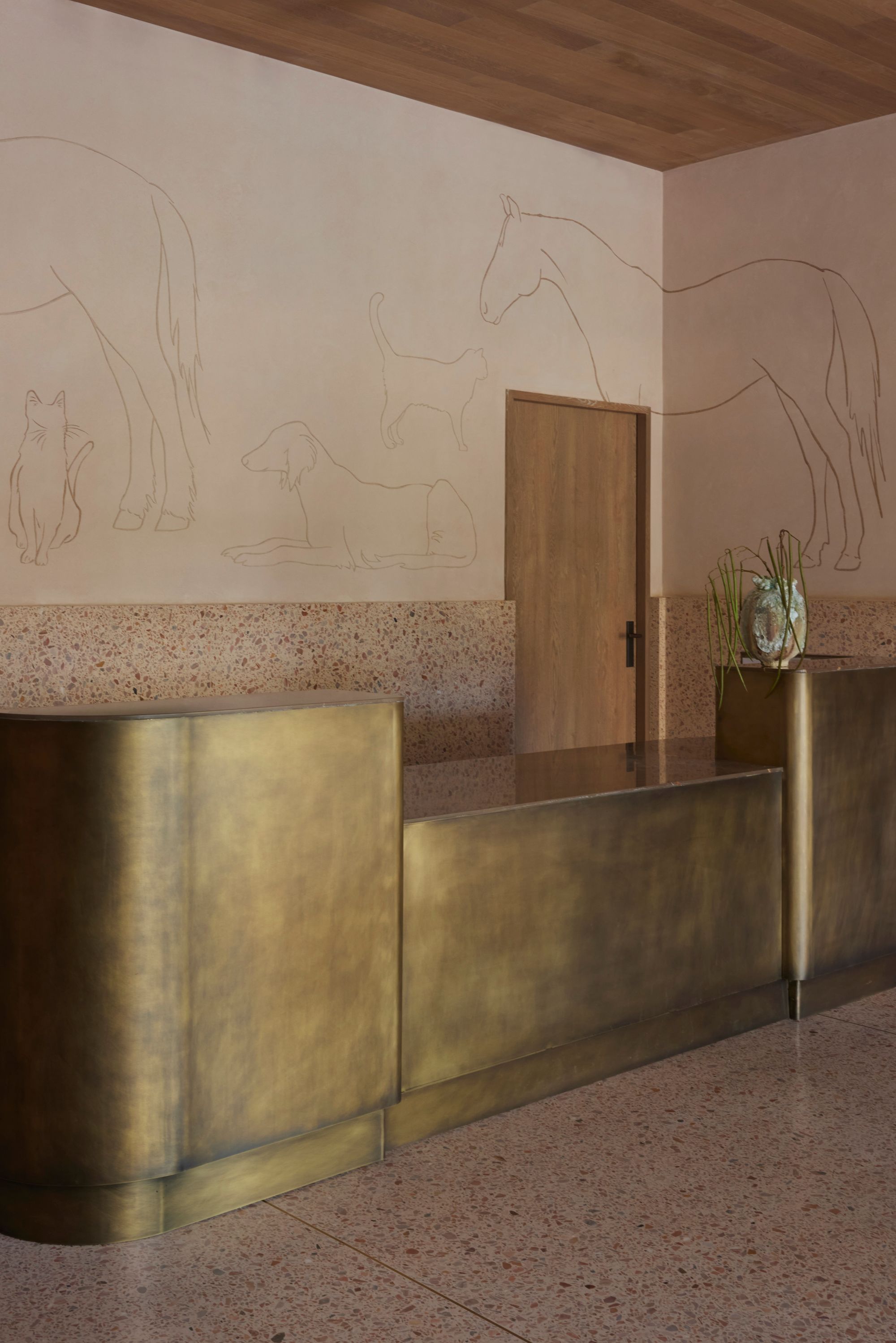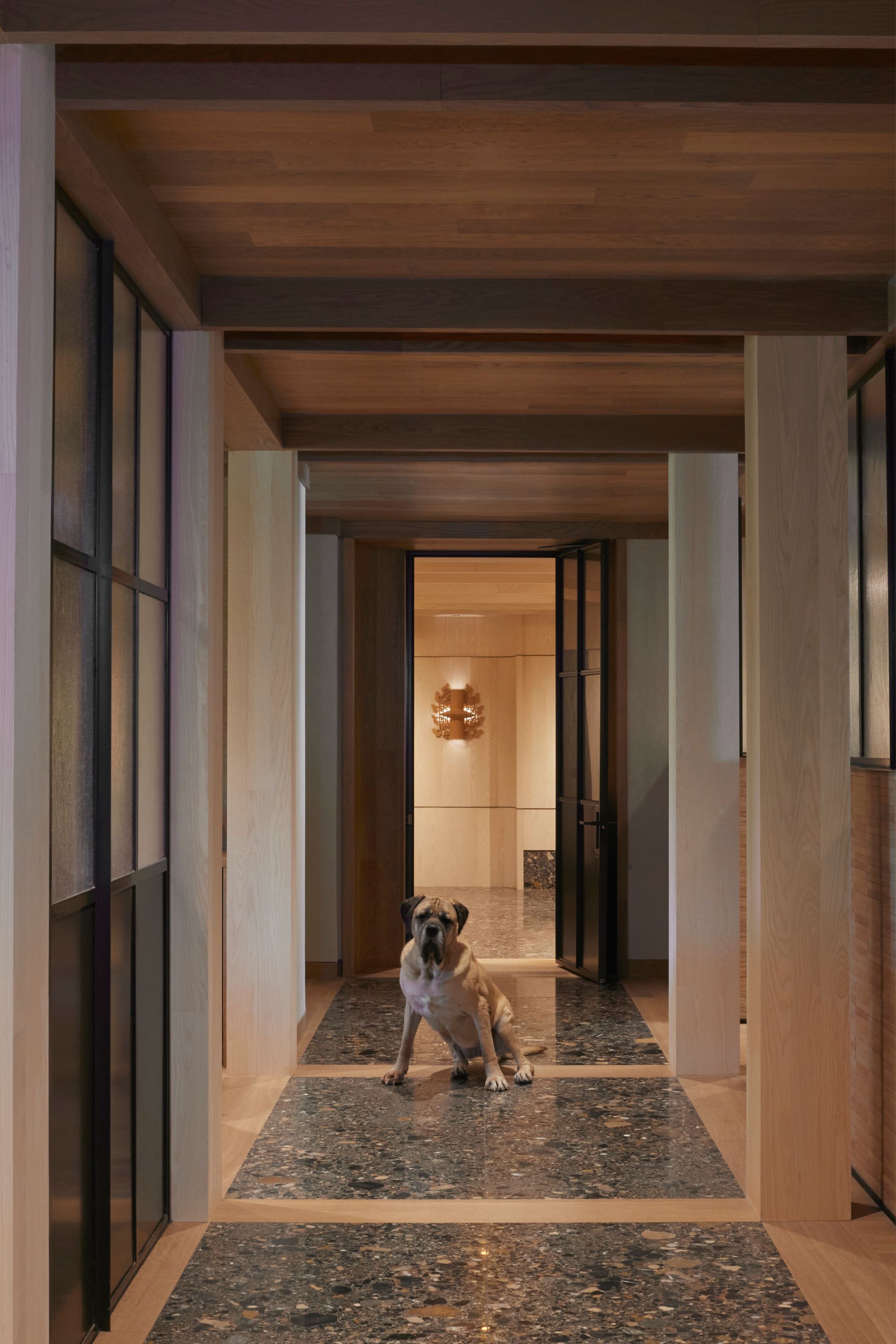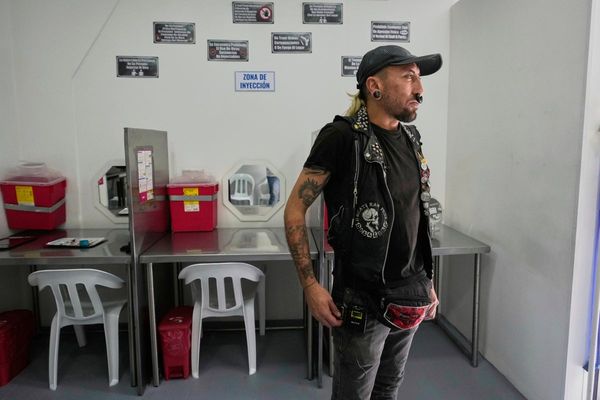
"I’m always drawn to projects that challenge me," Kelly Wearstler tells me while discussing one of her latest, and perhaps most unexpected design projects, the King Animal Hospital. It marks the interior designer's first venture into the field of healthcare, but just by looking at it, I suspect not the last.
Spanning 60,000 square feet, Ontario-based King Animal Hospital serves as a speciality emergency care center for small animals and horses. Though fitted with all the technical and practical medical apparatus you'd expect, stylistically, it has all the allure you'd want from a modern home.
So how did they convince Kelly Wearstler to come on board? It was a former client with a passion for animals who first approached her. But it didn't take much persuading. "They wanted to completely reimagine veterinary spaces — to create something with soul," says Kelly. And that's exactly what they did.

Even with an impressive career already under her belt, this new venture pushed Kelly to rethink her typical design strategy. "I had to completely immerse myself in the clinical requirements, which was a fascinating learning curve," she tells me.
To do so, she spent time with the veterinarians and technicians to understand precisely how they worked and what they needed out of a space, and this become her main priority.
Then, of course, she needed to consider the comfort of the animals. Design-wise, the typical healthcare facility (for animals and humans alike) is cold, bleak, and uninviting — a look that certainly doesn't help to relieve tensions or anxiety. With Kelly's help, King Animal Hospital completely changes that.

The decision to decorate with color is one of the first things you notice about the interiors at King Animal Hospital. Within each room and every hallway, there is a feeling of warmth, a sense of depth, and alluring intrigue about the space — all of which are developed through the color choices.
The predominantly neutral color scheme — the same kind you'd find in Kelly's residential work — soothes. Kelly shares that she approached the project's palette by thinking about emotions. She wanted to utilize shades that would feel calming — not only for the animals, but for their owners, as well as the veterinary staff.
"Soft creams and pink hues create a warm atmosphere in the reception area, while the terrazzo adds textural depth that reinforces the calming ambiance," she says. "As you move through the spaces, the colors transition subtly, defining different functional areas while maintaining a beautiful visual rhythm."

Of course, materials were an important consideration in Kelly's design process. "The material selections required a balance between clinical functionality and comfort," she shares. "Everything needed to be extremely durable while still bringing warmth and soul to the space."
To accomplish that goal, Kelly worked with a combination of inlaid stone, wood, and plaster — all of which brought a feeling of comfort to the hospital. Custom terrazzo was used on the floors, and in certain areas of the hospital, even extends up the walls.
"It's durable, simple to maintain, and adds a subtle sense of movement to the space," she says.

The lighting scheme was also an important consideration for Kelly and her team. Brightly lit spaces are a necessary requirement for vets as they conduct examinations and medical procedures, but can be unsettling to patients. Thus, Kelly needed to find a solution to properly (and comfortingly) light each room.
"We ended up designing these layered lighting scenarios that could shift between clinical precision and soft, soothing environments, depending on what was needed in the moment," Kelly explains.
The convenience and ease of a shift from stronger lighting to a softer, more subtle light demonstrates Kelly's attentiveness and consideration for not only the needs of the vets, but the comfort of the animals and their owners.

Unsurprisingly, stepping into the world of healthcare design presented its own unique of challenges for the designer, who relished the opportunity.
"The medical requirements became this amazing creative challenge rather than a limitation," she remarks. While some might view medical equipment and healthcare requirements as a constraint, Kelly says they simply fueled her creativity.
And in the end, The King Animal Hospital project became, in a way, personal for Kelly, who has pets of her own. "I wanted to create a space where anxiety just melts away," she says.
With the success of this hospital, Kelly and the vets at King Animal Hospital prove that healthcare facilities don't need to be scary, daunting spaces. They can be beautiful, design-oriented, and highly functional, too.







